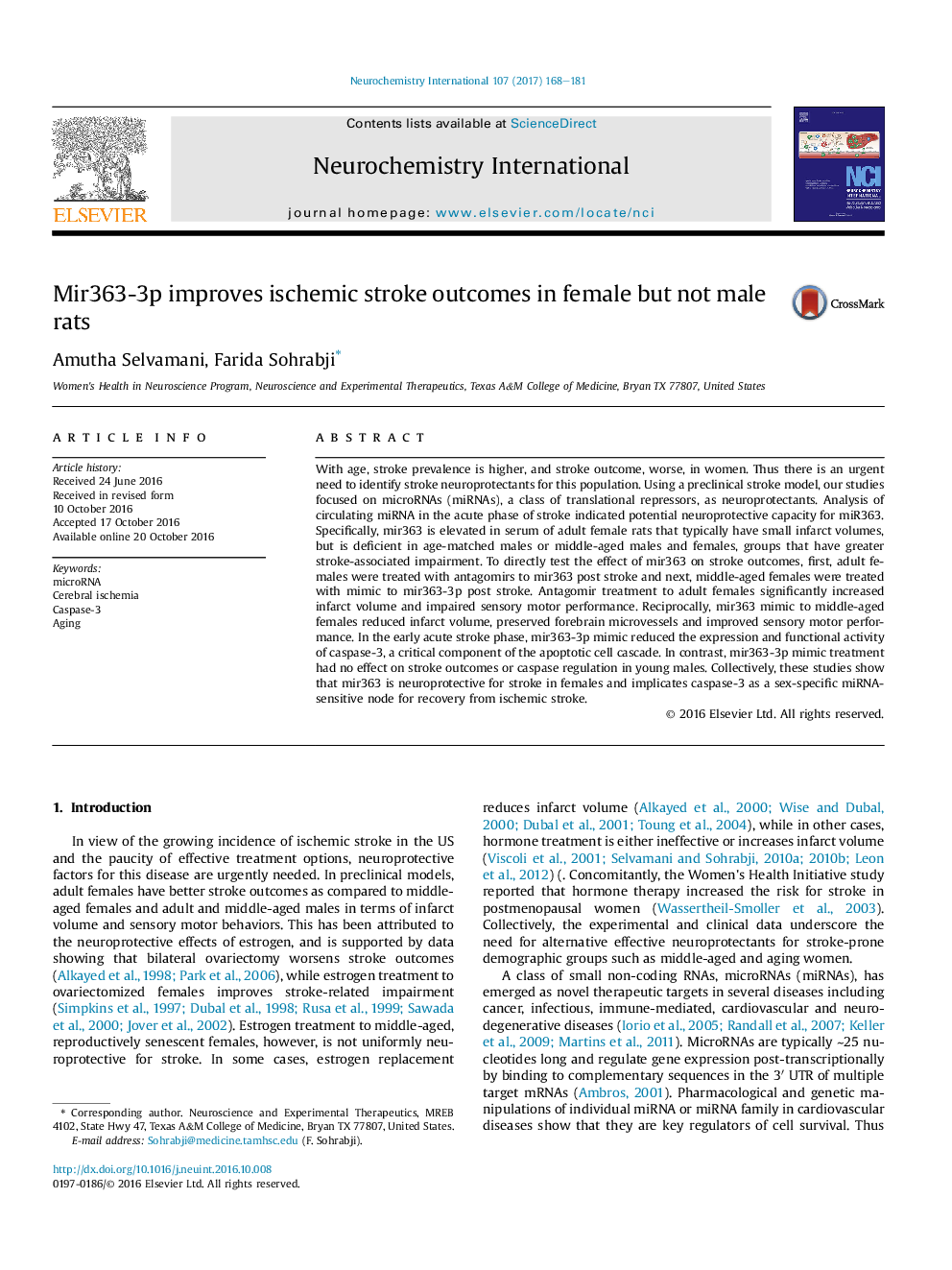| Article ID | Journal | Published Year | Pages | File Type |
|---|---|---|---|---|
| 5534597 | Neurochemistry International | 2017 | 14 Pages |
â¢Circulating miRNA 363-3p is inversely associated with infarct volume and stroke outcomes.â¢Post stroke mir363-3p antagomirs increase infarct volume in young females, while mir363-3p mimetics improve stroke outcomes.â¢Mir363-3p treatment reduces caspase-3 activity and expression in middle-aged females.â¢Mir363-3p treatment is sex-specific, such that it is ineffective in improving stroke outcomes in young or middle aged males.
With age, stroke prevalence is higher, and stroke outcome, worse, in women. Thus there is an urgent need to identify stroke neuroprotectants for this population. Using a preclinical stroke model, our studies focused on microRNAs (miRNAs), a class of translational repressors, as neuroprotectants. Analysis of circulating miRNA in the acute phase of stroke indicated potential neuroprotective capacity for miR363. Specifically, mir363 is elevated in serum of adult female rats that typically have small infarct volumes, but is deficient in age-matched males or middle-aged males and females, groups that have greater stroke-associated impairment. To directly test the effect of mir363 on stroke outcomes, first, adult females were treated with antagomirs to mir363 post stroke and next, middle-aged females were treated with mimic to mir363-3p post stroke. Antagomir treatment to adult females significantly increased infarct volume and impaired sensory motor performance. Reciprocally, mir363 mimic to middle-aged females reduced infarct volume, preserved forebrain microvessels and improved sensory motor performance. In the early acute stroke phase, mir363-3p mimic reduced the expression and functional activity of caspase-3, a critical component of the apoptotic cell cascade. In contrast, mir363-3p mimic treatment had no effect on stroke outcomes or caspase regulation in young males. Collectively, these studies show that mir363 is neuroprotective for stroke in females and implicates caspase-3 as a sex-specific miRNA-sensitive node for recovery from ischemic stroke.
